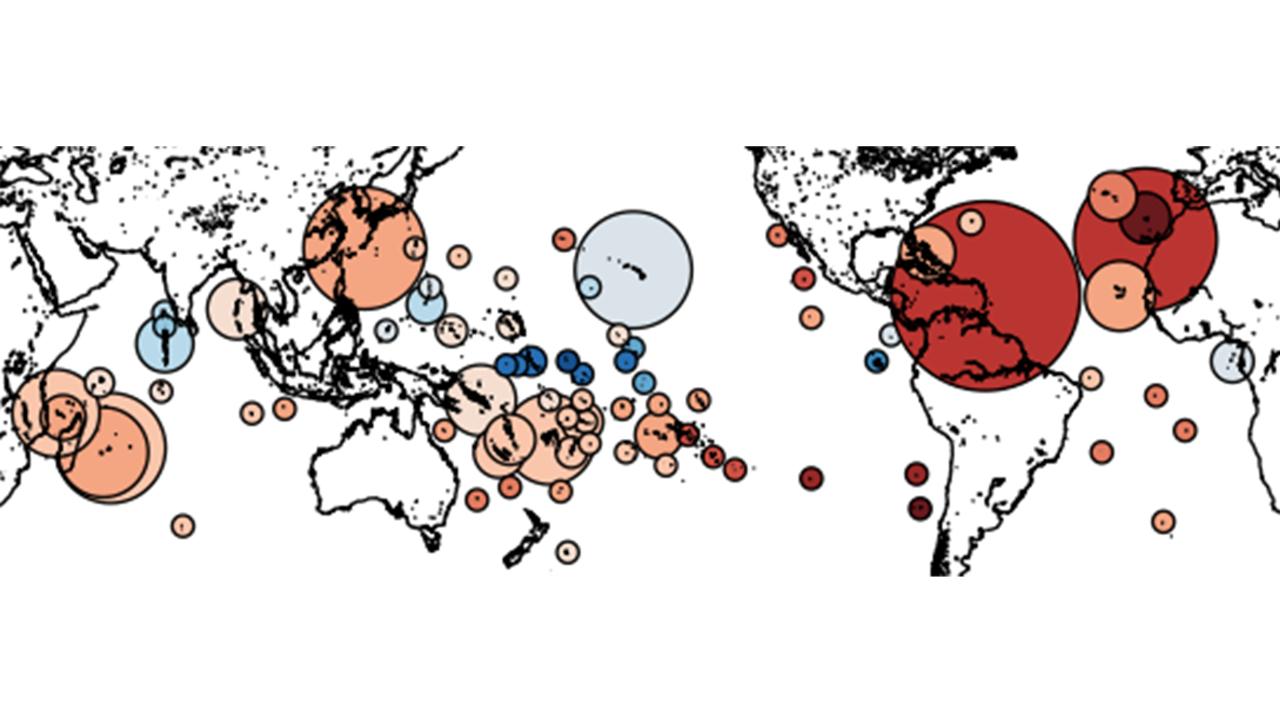Kris Karnauskas
Associate Professor of Atmospheric and Oceanic Sciences
- Postdoc, Lamont-Doherty Earth Observatory of Columbia University, 2008-09
- Ph.D., University of Maryland-College Park, 2007
- B.S., University of Wisconsin-Madison, 2004
Research Interests
My lab explores the dynamics of the coupled Earth system toward useful predictions of impacts ranging from marine ecosystems to human health. Specifically, we aim to understand the circuitry of the tropical ocean and atmosphere, its interaction with ecosystems and with higher latitude regions, how and why the climate system has changed in the past, and how climate will continue to change in the future–both naturally and as driven by human activities. We employ a "big data" methodology, leveraging satellite and instrumental observations, large international ensembles of global coupled climate model simulations, and running several ocean and atmosphere circulation models in house.
Current Research
Climate Dynamics:
One of my primary research objectives is to understand the dynamics of Earth's climate at global and regional scales. How and why does climate vary from year to year, decade to decade, century to century, and beyond? A particular focus is on the dynamics of the tropical ocean and atmosphere as a coupled system, such as the El Nino-Southern Oscillation (ENSO) and other intrinsic modes of climate variability. How do the tropics, extratropics, and high latitude regions interact? How will key aspects of Earth's climate respond to the radiative forcing associated with greenhouse gas emissions over the course of this century? I use observations (including satellites) and numerical models to explore these questions.
Climate Impacts:
"No challenge poses a greater threat to future generations than climate change," said President Barack Obama in his State of the Union address on January 20, 2015. Climate change is a global problem, but the impacts are felt locally. "...rising oceans, longer, hotter heat waves, dangerous droughts and floods, and massive disruptions that can trigger greater migration and conflict and hunger around the globe. The Pentagon says that climate change poses immediate risks to our national security. We should act like it."
In my lab, we combine "big data" (dozens of global climate models, satellites, etc.) as well as pinpoint measurements to understand the impacts of climate variability and change on marine ecosystems, transportation, freshwater resources, sea level, and tropical cyclones.
Ocean Circulation:
The thermal inertial of the climate system is in the ocean, so understanding the physics governing the storage of heat by the ocean and the movement of heat and other properties by currents is essential to understanding climate variability and change. Ocean circulation also serves as the mediator between large-scale climate variability and impacts on marine ecosystems. I seek to better understand the ocean circulation, particularly in the tropical Pacific, and translate such knowledge into improved overall understanding of global climate dynamics and projected impacts on marine ecosystems.
Research Categories
Atmosphere, Climate and Weather, OceansResearch Images
to
Invalid date -Sponsors
-
Invalid dateP.I.(s)
About CECA
CECA connects and creates a supportive environment for graduate students and postdocs who come from various academic units to do research in CIRES.

